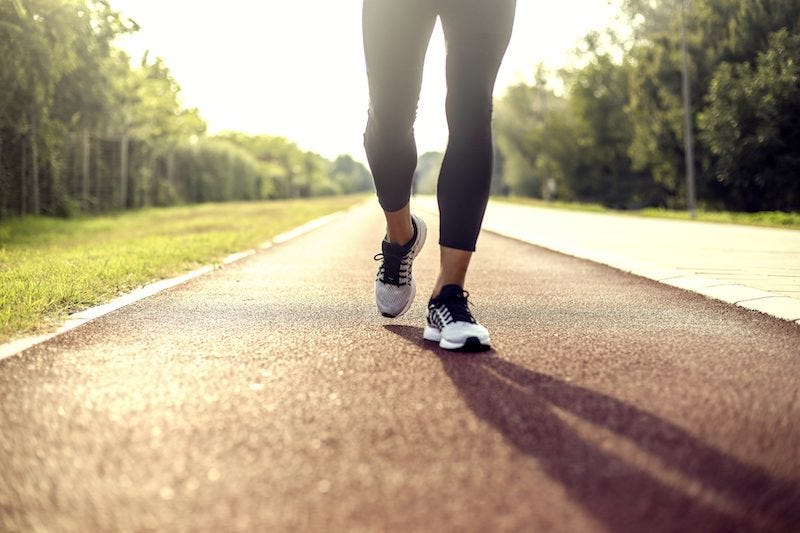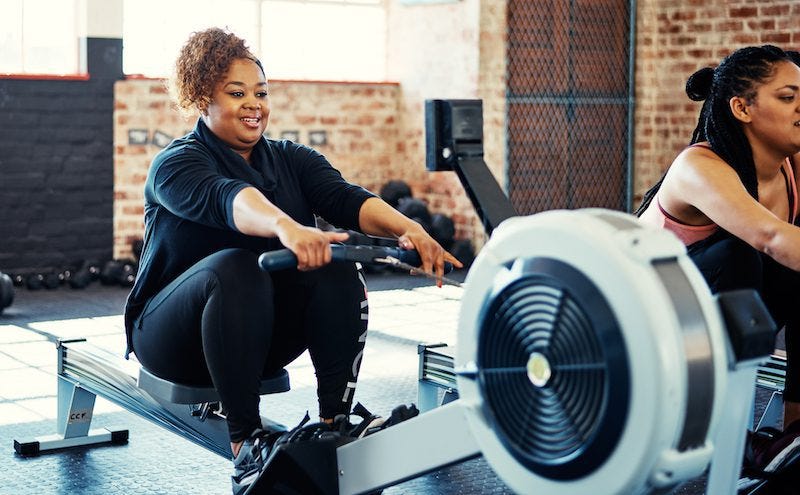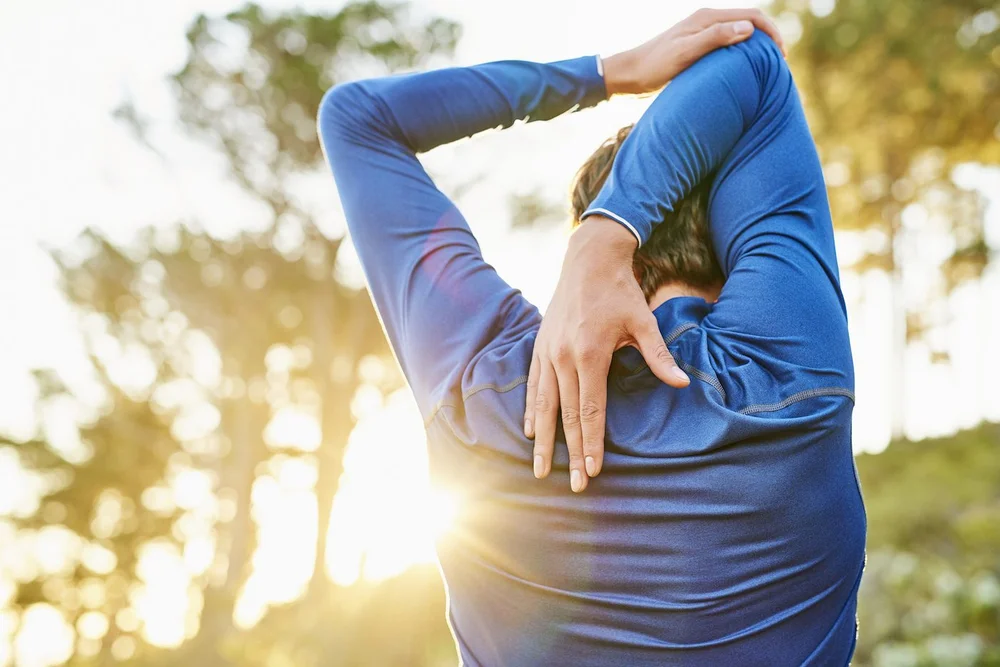Some of the Best Exercises to Strengthen Your Joints
Over time, have your joints stiffened and become painful?
Many people experience joint pain, especially while exercising. If you’re looking for ways to protect your joints while working out, keep reading…
Joint Care Basics: How to Strengthen Your Joints As You Age
Don’t Stop Exercising
Exercise is vital to building stronger joints, so one of the worst things you can do is to stop working out (unless you’re experiencing intense joint pain or are recovering from a knee, hip, or other joint surgery). Without a consistent exercise regimen, your muscles can become weak and flabby and your joints can become stiff and brittle. It’s okay to ease off your full routine while the pain persists, but once your body has recovered, gradually return to normal workouts.
Stay Hydrated
It’s vital to stay properly hydrated while exercising. Drinking water helps to prevent muscle cramping and lubricates your joints.
Additionally, drinking water can help your muscles stay strong. Remaining well-hydrated enables your muscles to work longer and harder before they feel tired, and this will help you build muscle.
Fantastic Fatty Acids
The omega-3 fatty acids EPA (eicosapentaenoic acid) and DHA (docosahexaenoic acid) have a wide range of profound health benefits, from supporting heart and joint health to promoting healthy cognition and mood. Omega-3s play a crucial role in regulating the body’s healthy inflammatory responses, which reduce the chances of having problems with your circulation, joints, and other organs.
Vitamin C and Collagen
Collagen is a family of large proteins that provide strength to the body’s connective tissues. Collagen is a major structural component of this connective tissue “glue” that holds our cells in their assigned locations within our tissues and organs. Since the body needs vitamin C to make collagen for healthy circulation, skin, joints, bone and other hard tissues, and all the body’s organs, it’s recommended to supplement with a 1-2 gram daily dose of high-quality vitamin C.
High-absorption Curcumin
Curcumin (a mixture of 3 highly beneficial curcuminoids), from the turmeric root, can be excellent for joint health. However, turmeric powder is very poorly-absorbed. There are high-absorption curcumin supplements available, but before trying one, make sure the product has improved joint health in clinical trials.
Worst Sports for Joints
Seriously consider avoiding these joint unfriendly sports (especially if you’re already dealing with joint pain):
- Basketball
- Football
- Rugby
- Long-distance running
- Racquet sports (tennis, squash, racquetball)
Any sport where you kick a ball, run at high speeds or make rapid directional changes can be punishing to the joints.
Now that we’ve looked at some sports that are bad for the joints, here are a few activities you might consider if you suffer from joint pain…
Best Low-impact Exercises That Will Help Protect Your Joints
1. Walking

Walking is one of the simplest and healthiest exercises. Walking stimulates blood flow and provides oxygen to the brain. Walking can help clear your mind, improve your mood, and burn calories all at the same time.
Walking doesn’t require practice or any special ability, yet its health benefits are numerous. Besides trimming your waistline, walking can help:
- Enhance your mood
- Increase blood flow
- Lower blood pressure
- Improve blood sugar regulation
- Lower unhealthy high levels of LDL cholesterol
- Raise HDL cholesterol to higher, more healthy levels
- Help you stay fit and strong
Beginners should start on a level path and walk for 15 minutes, 3-5 times per week. Once that routine becomes comfortable, try picking up the pace, extending the duration, or choosing a more challenging course to take your walks to the next level.
2. Swimming

As a low-impact sport, swimming is very good for your health. It improves the body’s use of oxygen and increases lung function.
Swimming is one of the only workouts where you can burn calories, boost your metabolism, and firm up many muscles in your body without putting stress on your joints. Your joints are fully supported, so you don’t have to worry about sustaining the kind of injuries that can come from jogging or other high-impact sports. Swimming is extremely beneficial for those with joint problems because, while in the water, you’re non-weight bearing.
Depending on how fast you swim, you can burn anywhere from 500-600 calories an hour. Doing the breaststroke for 30 minutes can burn almost 400 calories.
3. Rowing

Activities like canoeing, kayaking, and rowing are considered low-impact sports. Since movements made during these activities are fluid and cyclical, they’re easy on your joints.
These water sports exercise the upper body and core, so the hips and knees are spared excessive joint strain. You can also find a rowing machine at your gym or fitness center for the same low-impact, but heart-pumping exercise.
Best Indoor Exercises for Joints
In addition to the outdoor activities listed above, you can do stretches and flexibility exercises at home. Though there are literally hundreds of joint mobility exercises you can try, here are just a few (demonstration videos for each of these can be found online):
- Arm circles
- Leg extension
- Lunges
- Seated row
- Shoulder press
- Step-ups
- Squats
Before beginning any exercise or physical activity, be sure to properly warm up by doing basic stretches like these.
[wc_box color=”inverse” text_align=”left”]
Bottom line: physical exercise is perhaps the single most important thing you can do to keep your brain and body health. Exercise is a great way to feel better, stay healthy, and just have fun.
As a general goal, aim for at least 30 minutes of some form of physical activity every day. If you’re looking to lose weight, you may want to extend the duration and increase the intensity of your workout sessions.
Putting these tips into practice can help strengthen your joints and reduce joint pain so you can stay active and enjoy a brain-healthy life.
[/wc_box]
At BrainMD, we’re dedicated to providing the highest purity nutrients to improve your physical health and overall well-being. For more information about our full list of brain healthy supplements, please visit us at BrainMD.
- This Is What You Need to Know About the Standard American Diet! -
- What Are the Pros and Cons of Western vs. Eastern Medicine? -
- Why Experts Say You Should Take Vitamin C, Vitamin D3 and Zinc -
- These Are Some of the Best Natural Herbs for Energy -
- What Are the Top Health Benefits and Types of Saunas? -



